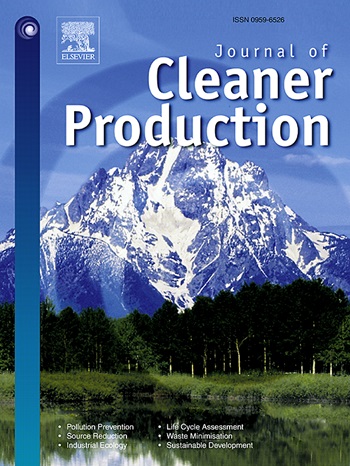Phototrophic microalgae-driven comprehensive remediation of arsenic and cadmium: A novel iron mineralization pathway enabling arsenic immobilization
IF 10
1区 环境科学与生态学
Q1 ENGINEERING, ENVIRONMENTAL
引用次数: 0
Abstract
Phototrophic microalgae have demonstrated remarkable potential in remediating heavy metals like cadmium (Cd), yet their efficacy for metalloids like arsenic (As) remains limited due to the lack of efficient immobilization pathways. While iron (Fe) minerals are known to strongly bind As, the potential for microalgae to drive Fe mineralization for As immobilization has not been systematically investigated. To bridge this knowledge gap, a microcosm experiment was conducted, focusing on the role of Fe mineralization and comprehensive remediation of As and Cd, which is strongly linked to both biotic and abiotic processes driven by microalgae and their associated bacterial consortia. Results revealed a dual mechanism for metal(loid) immobilization. First, microalgal photosynthesis-induced pH elevation (from 3.46-3.54 to 5.45–5.50) triggered Cd hydrolysis and precipitation (28%–30% removal within 20 days), while sustained alkalization enhanced Fe(II) oxidation rates by 45% compared to abiotic controls during the 90-d cultivation, achieving >99% As removal through Fe mineral coprecipitation. Second, the microalgal-bacterial consortia established synergistic interactions that simultaneously mitigated metal(loid) toxicity and enhanced remediation efficiency. Specifically, Fe-oxidizing bacteria generated biogenic Fe minerals with higher As adsorption capacity (As/Fe ratio 0.28 vs. 0.20 in controls), resulting in faster As removal, while sulfate-reducing bacteria facilitated CdS precipitation, collectively enabling >97% Cd removal. These findings highlight microalgae-induced Fe mineralization as a previously overlooked mechanism enabling comprehensive remediation of both heavy metals and metalloids, expanding the scope of phycoremediation applications.

光养微藻驱动的砷和镉的综合修复:一种新的铁矿化途径,使砷固定
光养微藻在修复重金属镉(Cd)方面显示出巨大的潜力,但由于缺乏有效的固定化途径,其对类金属砷(As)的修复效果仍然有限。虽然已知铁(Fe)矿物能强烈结合砷,但微藻驱动铁矿化以固定砷的潜力尚未得到系统的研究。为了弥补这一知识差距,我们进行了一项微观实验,重点研究了铁矿化和砷和镉综合修复的作用,这与微藻及其相关细菌群落驱动的生物和非生物过程密切相关。结果揭示了金属(样蛋白)固定的双重机制。首先,微藻光合作用诱导的pH值升高(从3.46-3.54到5.45-5.50)触发了Cd水解和沉淀(20天内去除28%-30%),而持续碱化在90天的培养过程中,与非生物对照相比,Fe(II)的氧化率提高了45%,通过Fe矿物共沉淀实现了99%的As去除率。其次,微藻-细菌联盟建立了协同相互作用,同时减轻了金属(样蛋白)毒性并提高了修复效率。具体来说,铁氧化菌产生的生物源性铁矿物具有更高的As吸附能力(对照组As/Fe比0.28比0.20),导致更快的As去除,而硫酸盐还原菌促进了Cd的沉淀,共同使Cd去除率达到97%。这些发现强调了微藻诱导的铁矿化是一种以前被忽视的机制,可以对重金属和类金属进行综合修复,扩大了藻修复的应用范围。
本文章由计算机程序翻译,如有差异,请以英文原文为准。
求助全文
约1分钟内获得全文
求助全文
来源期刊

Journal of Cleaner Production
环境科学-工程:环境
CiteScore
20.40
自引率
9.00%
发文量
4720
审稿时长
111 days
期刊介绍:
The Journal of Cleaner Production is an international, transdisciplinary journal that addresses and discusses theoretical and practical Cleaner Production, Environmental, and Sustainability issues. It aims to help societies become more sustainable by focusing on the concept of 'Cleaner Production', which aims at preventing waste production and increasing efficiencies in energy, water, resources, and human capital use. The journal serves as a platform for corporations, governments, education institutions, regions, and societies to engage in discussions and research related to Cleaner Production, environmental, and sustainability practices.
 求助内容:
求助内容: 应助结果提醒方式:
应助结果提醒方式:


